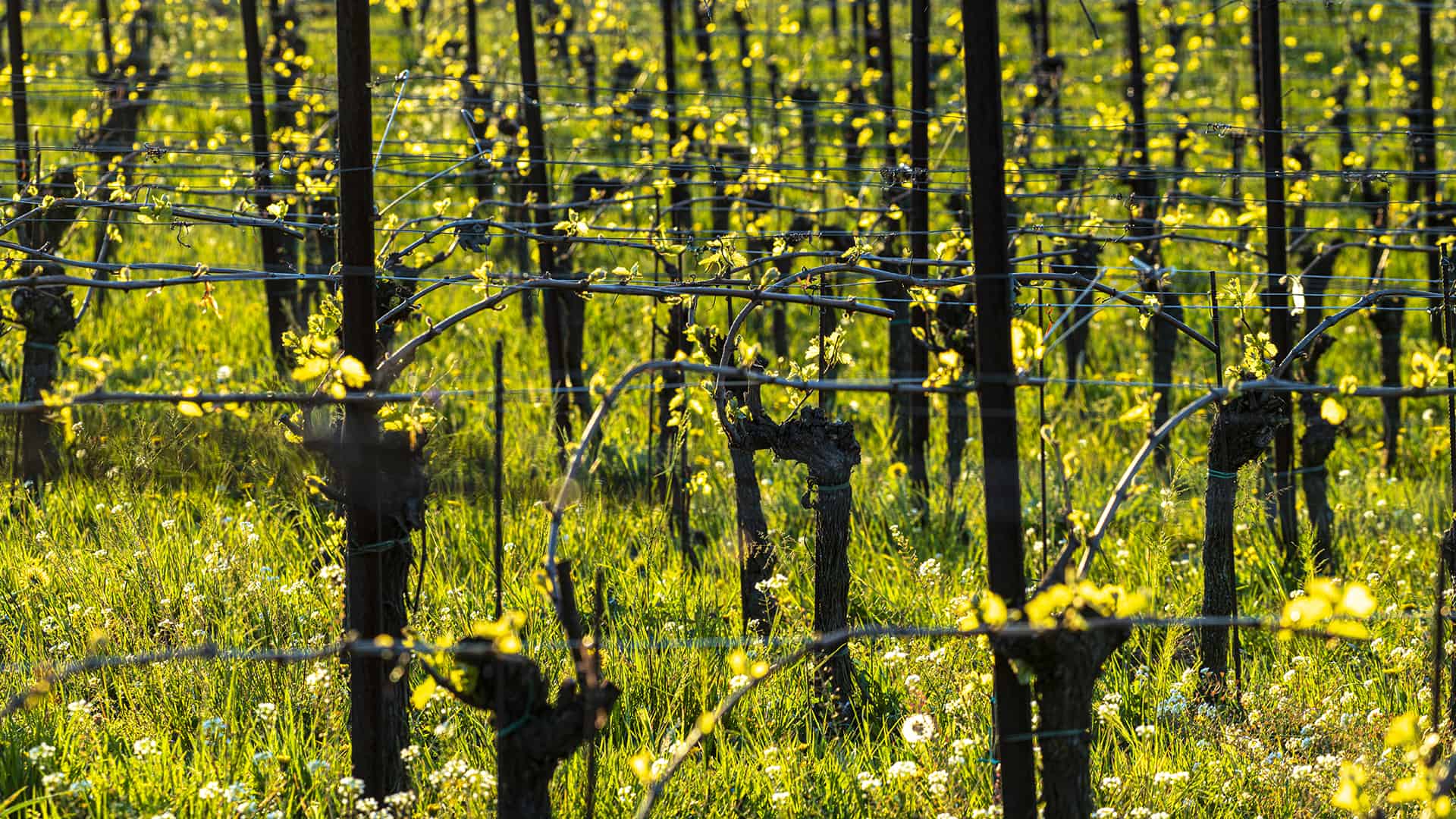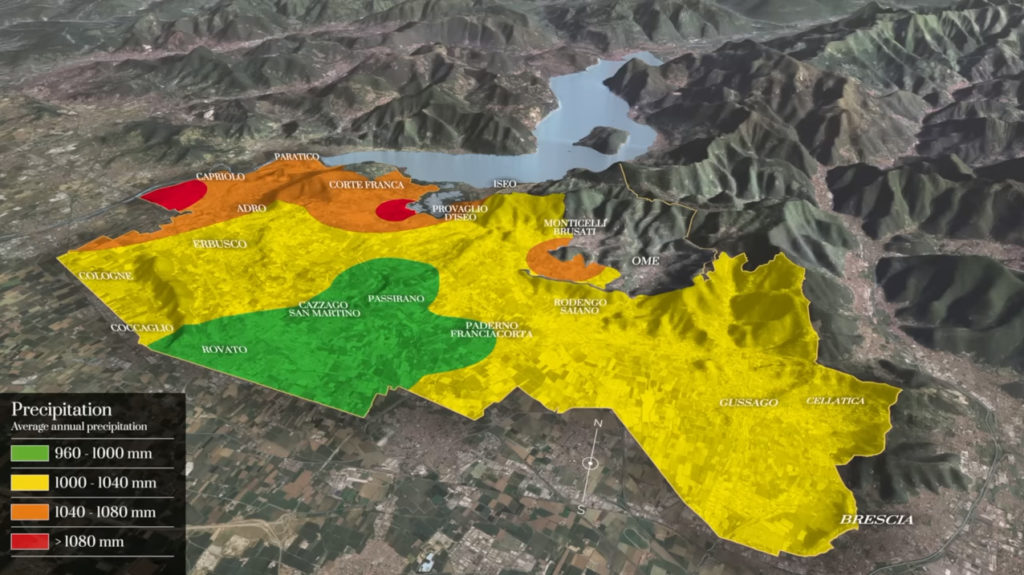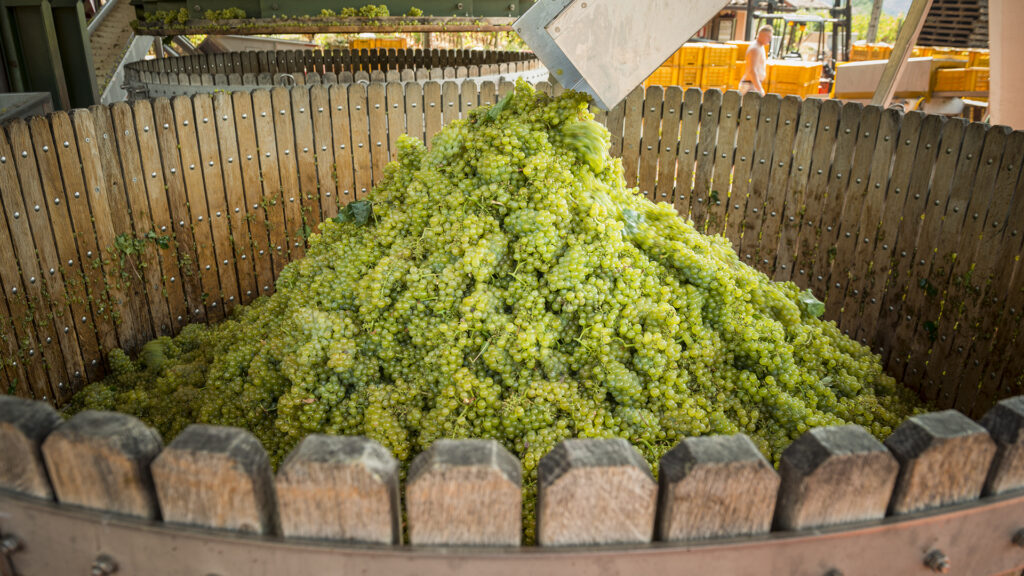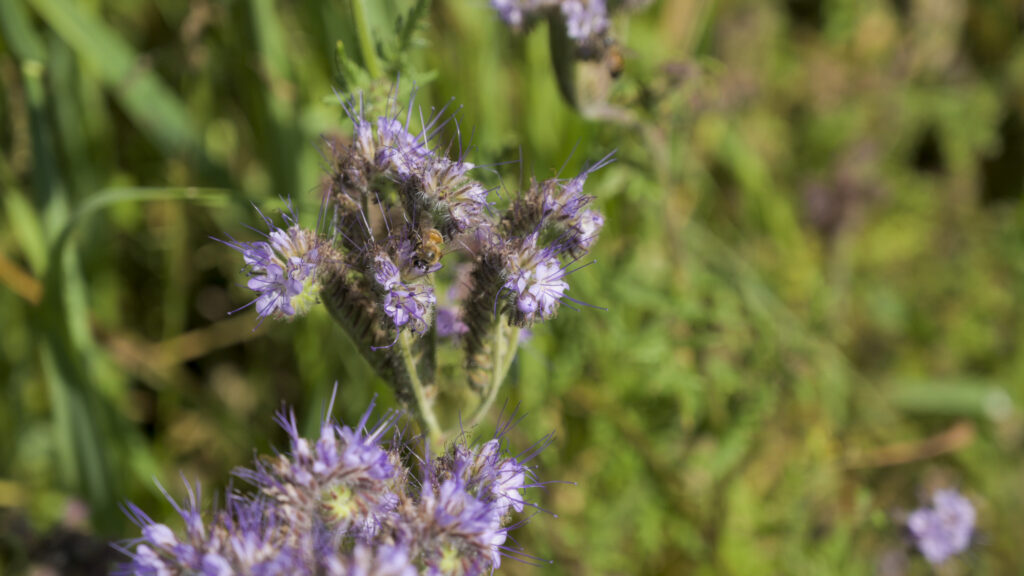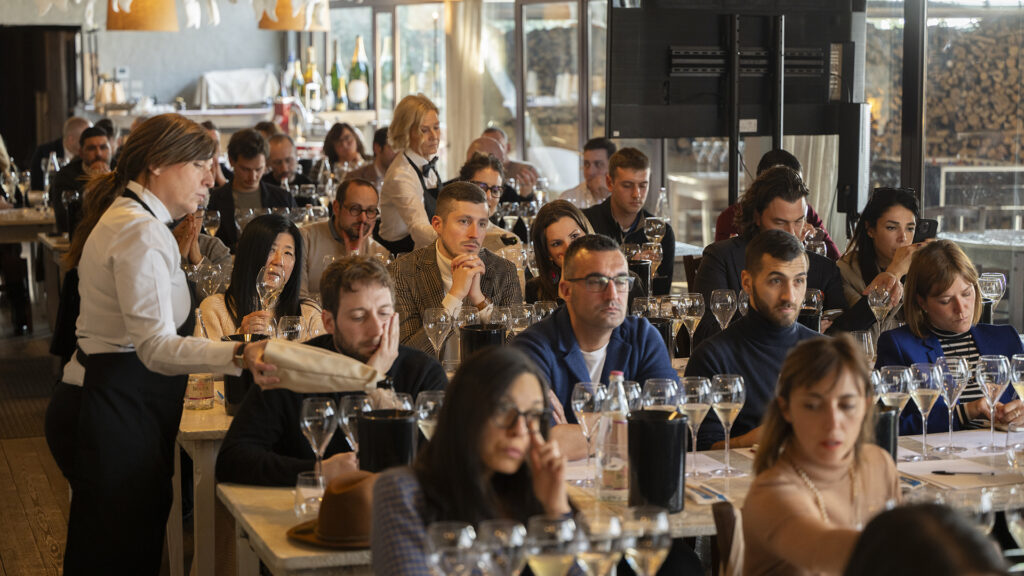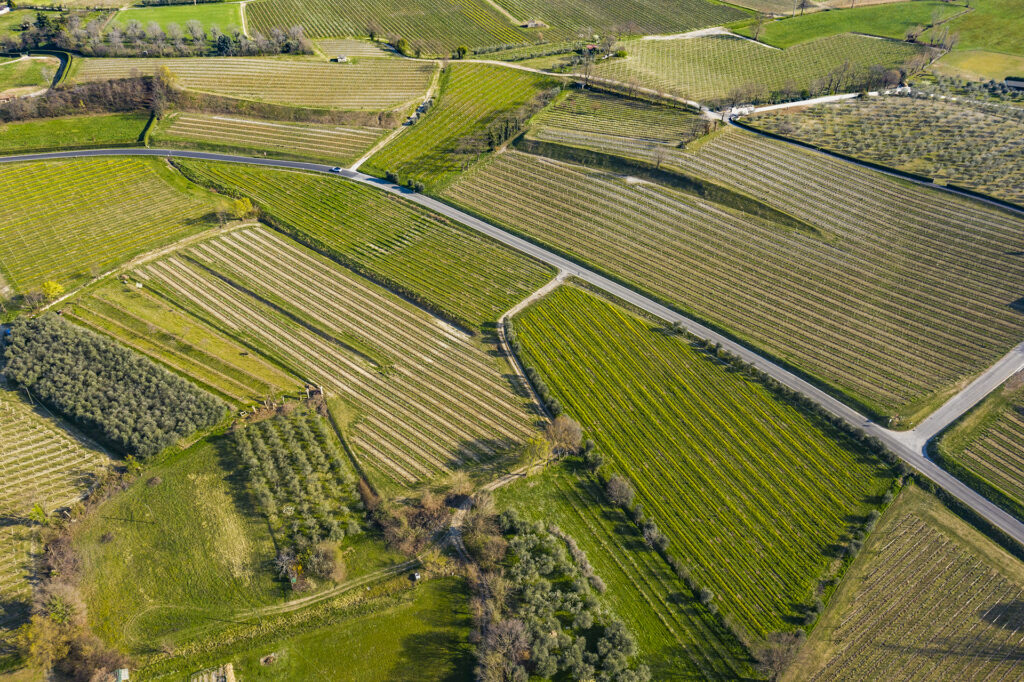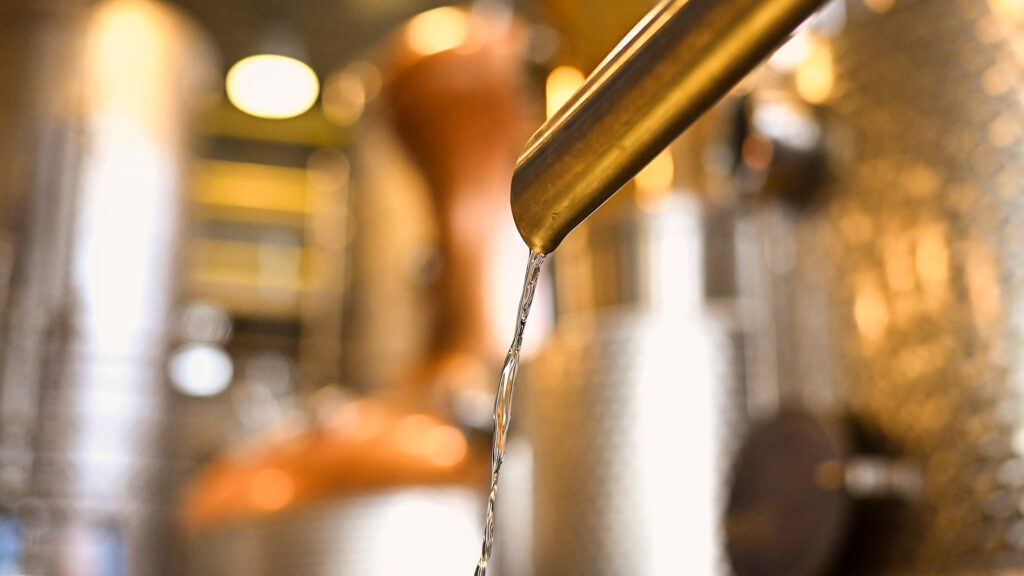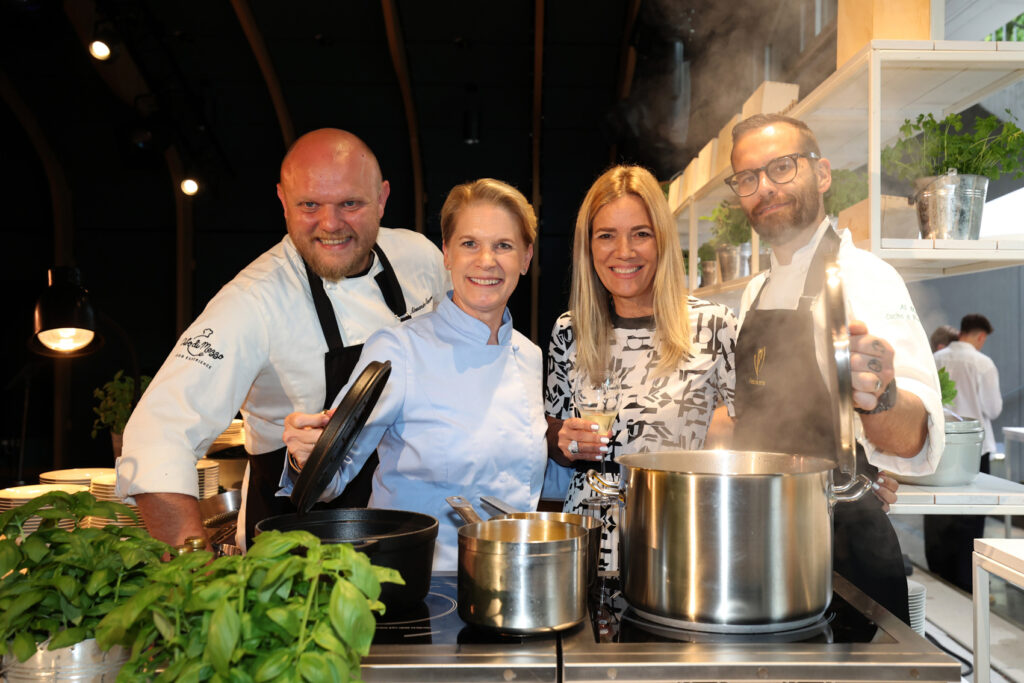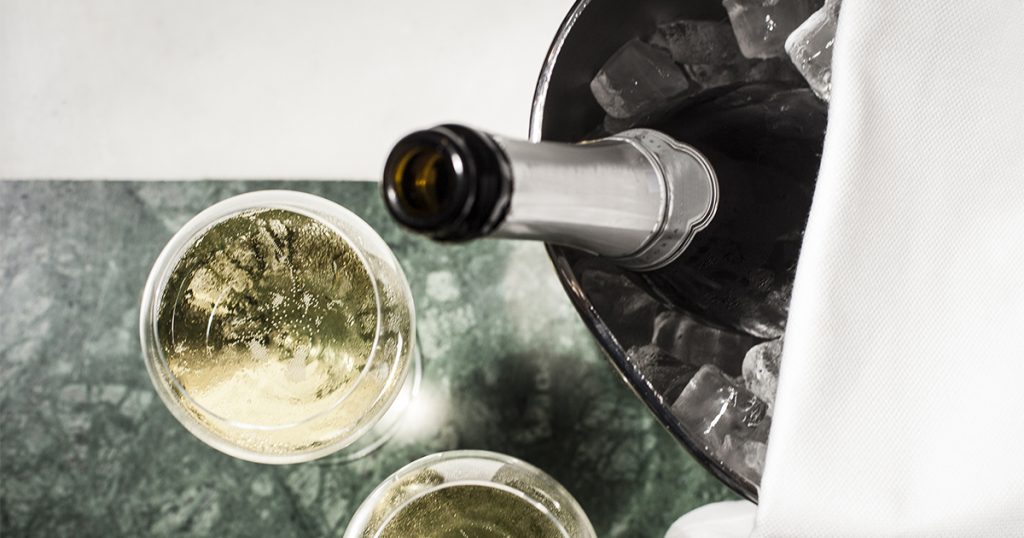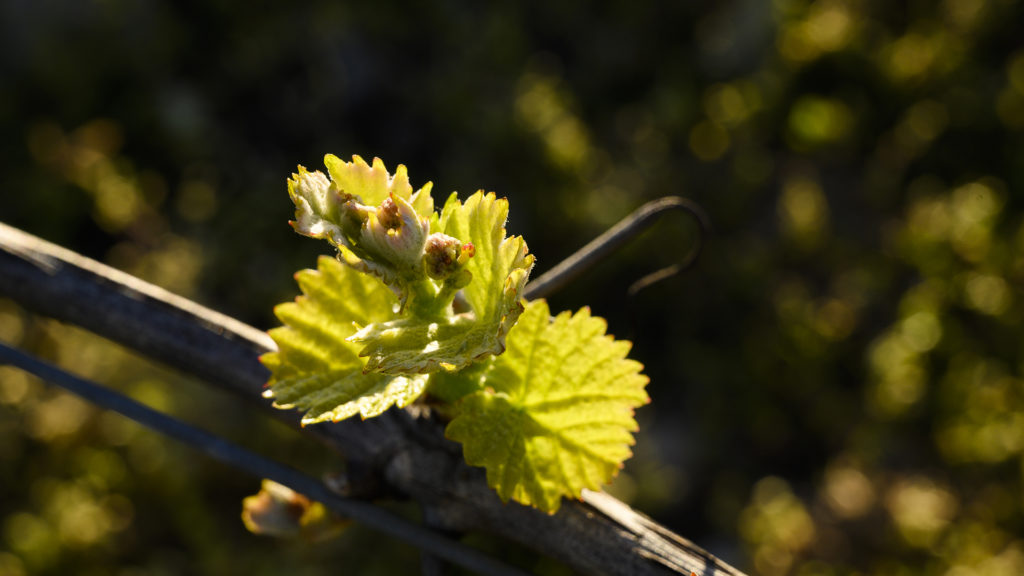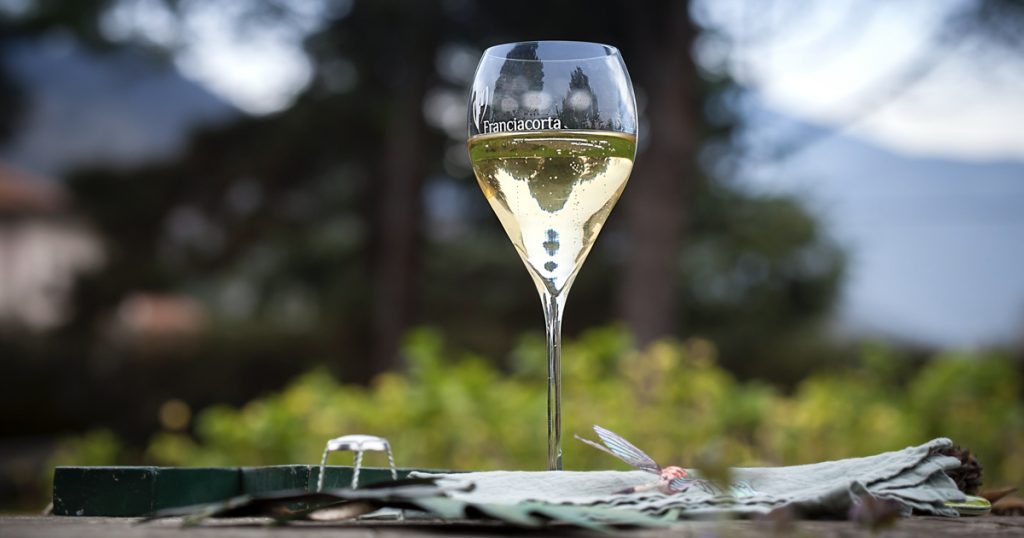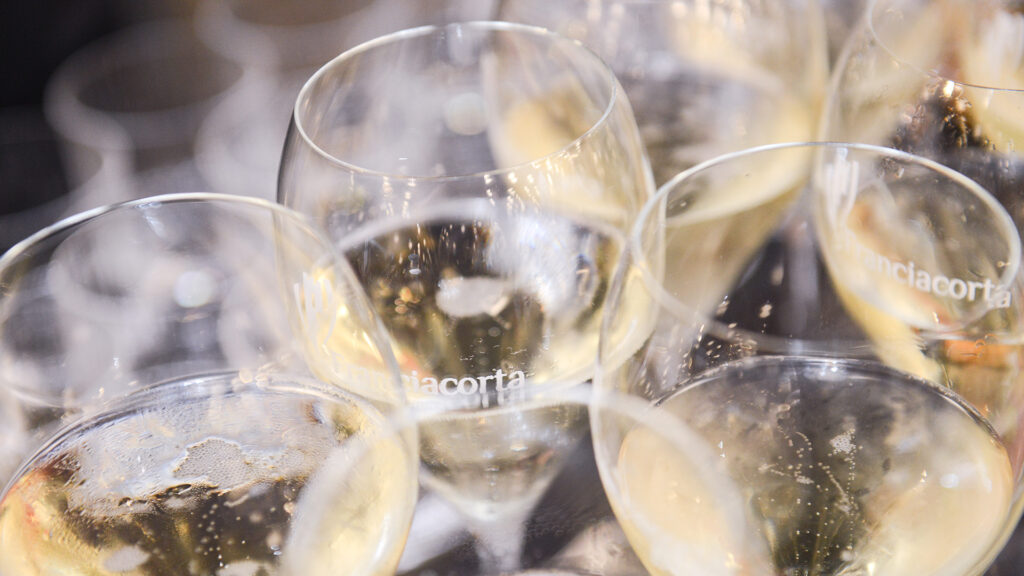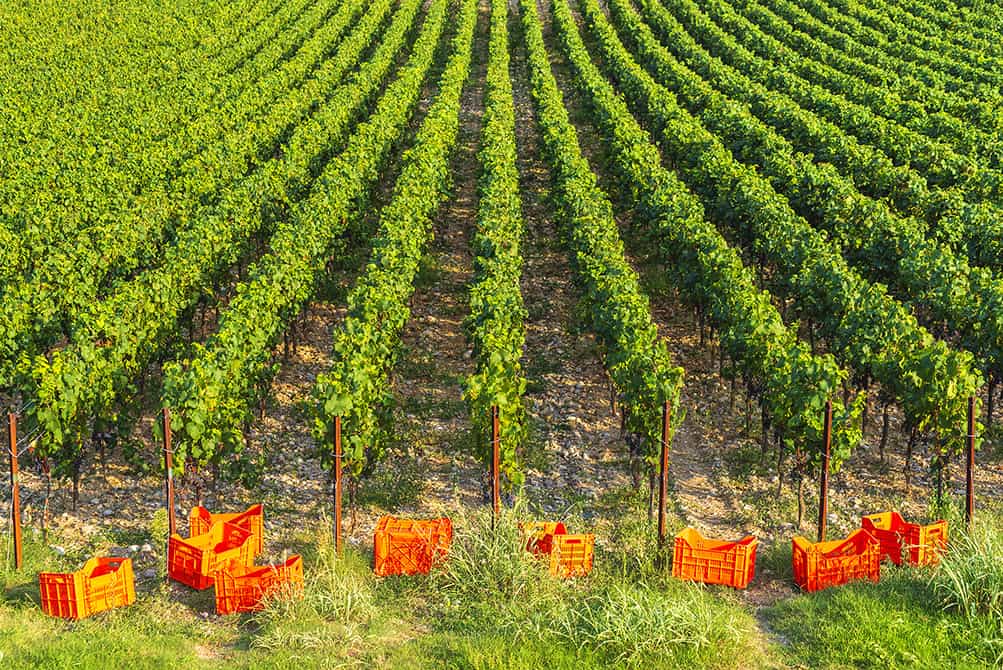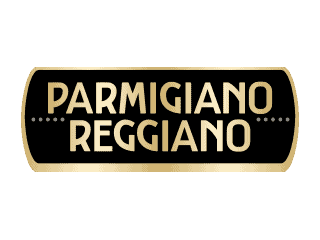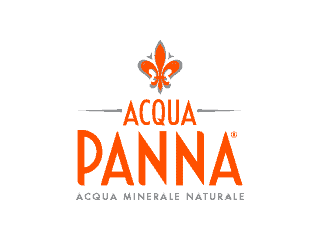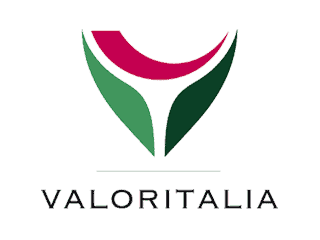May is the month in which canopy management work begins. Three factors are determinant in deciding when is the best time to turn our attention to the plant: a specific average temperature; the new shoots reaching a specific length, generally in excess of 20 cm at this stage; and lastly the arrival of the spring rains, which ensure hours of moisture and an increase in humidity levels at this stage.
There’s a great deal that needs doing in the vineyard in this period of the year, beginning with disbudding and shoot selection. It is a matter of removing non-ideal shoots born from last year’s fruiting canes to favour this year’s canes. Disbudding consists of removing the second and potentially third shoots which grow from the same node and generally at the same time or less commonly a few weeks later, and a full-blown fruiting shoot selection is also done at this time, in accordance with diverse production goals and philosophies.
The next stage is suckering, i.e. the clearing of the vine trunk, involving removing shoots budding from old wood (shoots or suckers), getting rid of basal, trunk and branch shoots and leaving room for the appropriately located and healthy shoots which serve to reconstitute or rejuvenate a part of the plant.
It is also the right time for mowing between rows or the bedding or burying of any planned green manure. This agricultural practice is fundamentally important to the nourishment of the terrain, with the leafy plants chosen to grow between the rows potentially increasing or reducing the soil’s fertility. Some plants have a greater ability than others to fix the soil’s nitrogen, increasing the amount of nitrogen available to the vines, whilst others can break up the soil with their deep roots known as tap roots, letting air into soil compacted by tractors, and others, lastly, can clear the soil of specific chemical substances and/or micro-organisms harmful to vines or compete with the vines for nutrients, where limiting foliage growth is required.
Once the purpose of the green manure has been decided on, the chosen plants are sown. These will then be mowed or bedded in when flowering or full ripening is approaching, left to dry on the ground for a few days and then potentially dug into the first 25 cm of soil.
If burial is chosen the plants are immediately attacked by micro and macro organisms which turn part of it into humus and part into nutritional substances for the vines. As a general rule the more fibrous the plant the more humus there will be.
This is also the time to start any organic and/or mineral manuring. Although organic manure is best put down in autumn it can, if needed, be used later on, in spring, as well.
Protection against fungal disease must also be set in motion, including the vine’s bitter enemies of American origin, the two principal European vine diseases, peronospora and powdery mildew. Peronospora causes leaf spots, yellow areas on the top of leaves which are easy to see because they are transparent, and underneath these whitish moulds grow. Affected areas then turn brown and the leaves dry out and fall off in the most serious cases. Green shoots can also be affected but the most serious attacks are on the bunches of grapes themselves. Powdery mildew, on the other hand, leads to a white film which looks like flour on leaves, buds, flowers and fruit. The growth of affected areas is halted and leaves curl up, turn yellow and fall off while shoots struggle to grow and flower buds produce small, deformed flowers.
Although these are obviously not the only plant diseases, they are the most common and the most difficult to get rid of. Fauna can also do considerable damage, in sensitive areas, with flying insects such as moths needing to be controlled.
Normally this is done after the harvest or during the winter but, if it hasn’t been done, now is the time to repair the vine supports and put in new ones where needed, remove failing or diseased plants, especially ones suffering from flavescence dorée, and needing cutting out, and plant new vines where needed. This requires removing and distancing old vines from the vineyard and planting new cuttings.
Other useful practices can include working the areas between rows with subsoiling to get air into the soil where plants have grown in the middle, or harrowing to allow air into the surface soil in alternate rows so as not to compromise vehicle accessibility in the event of heavy rain.
